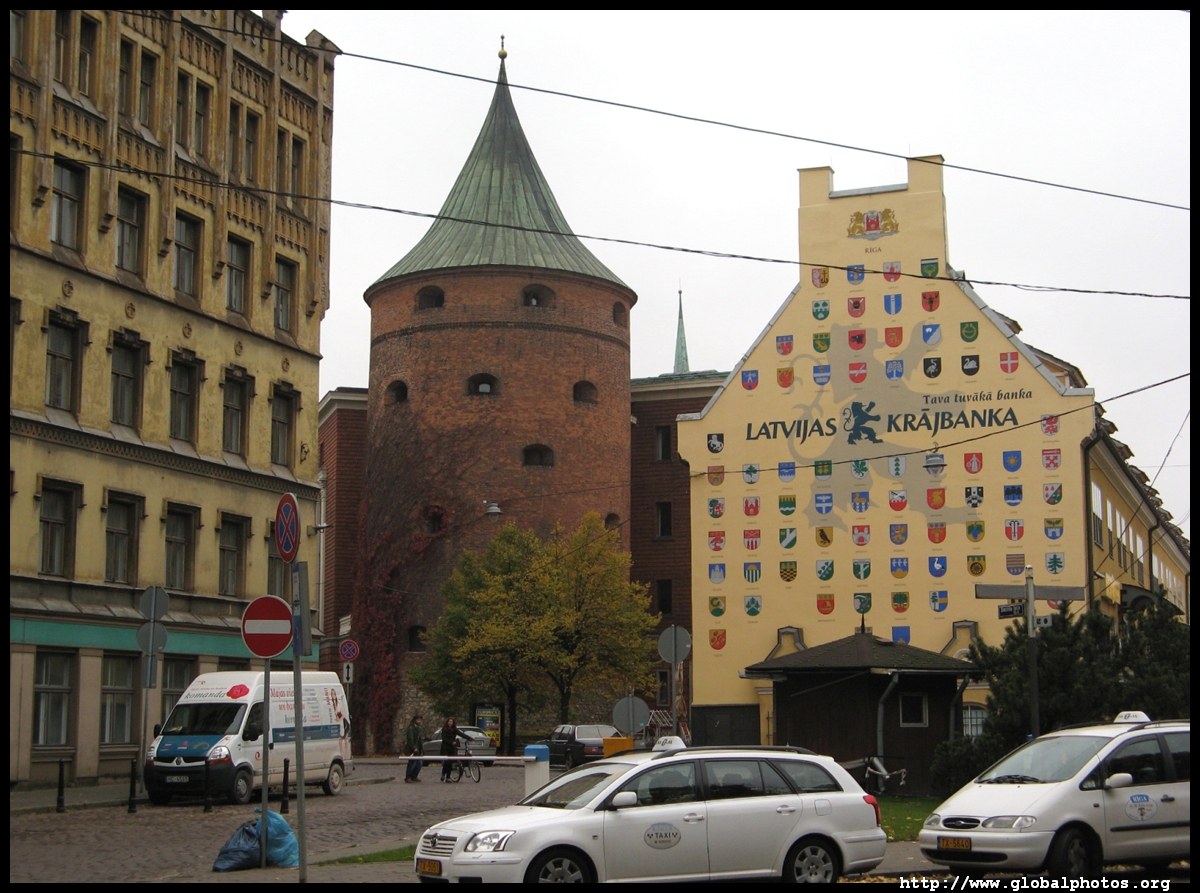Riga Photo Gallery - City Scenes
This is the only defense tower left out of 18. Rebuilt in 1650 after the Swedish invasion destroyed it in 1621, it was so sturdy that Russian cannonballs couldn't make it past the walls.
Named to promote Laima chocolates, the Laima Clock was built in 1924 and is a meeting marker.
St. John's Church was originally a Dominican Order monastery with a history going back to the 13th century, becoming a Lutheran church in 1582.
St. Peter's Church was first mentioned in the early 13th century, although today's church is the product of many reconstructions. It is said that Peter the Great tried to save it from fire in 1721, but the spire was destroyed. Tradition says the church's lifespan can be told by throwing glass from the top to see how many pieces it will break into. The more pieces, the longer life it will be.
The Parliament building was built from 1863-7 and has seen various uses over the years, from the Livonian Knights' Lantag to the German SS headquarters during World War II.
The Three Brothers date from the 15th to 18th centuries, with #17 being the city's oldest stone residence. The small windows reflect the taxation system during the Middle Ages based on their size.
Our Lady of Sorrows Church was built under the request of Holy Roman Emperor Joseph II in 1780 when he saw a small wooden chapel here en route to St. Petersburg, with financial support from royalty.
British traders commissioned construction of St. Saviour's in 1857. During Soviet times, the church became a student disco but is now back to being a place of worship for English-speaking expats.
These are the oldest parts of the city walls, built between the 13th and 16th centuries. The Swedish Gate was built in 1698 to celebrate their occupation, with the executioner living inside.
Central Market has occupied its current location since 1930. The very successful market prompted the city to bring in 35m-high zeppelin hangars from western Latvia to accommodate the trade. Previously along the riverside with a history going back to the late 16th century, the market was the largest in the Swedish empire at the time.
Built in 1935 replacing a statue of Peter the Great, the Freedom Monument stands 42m tall with decor representing the 4 virtues. The lady at the top is known as Milda, who holds 3 golden stars symbolizing Latvia's 3 cultural regions. During Soviet times, people were not allowed to place flowers at the base under the threat of being sent to Siberia.
The Nativity of Christ Cathedral was built from 1876-84 for the Russian community. During Soviet times, it was a lecture hall and planetarium until 1990 when i tbecame a place of worship again.
Riga Cathedral is the largest place of worship in the Baltics. With a history of some 800 years, the building now sits below its surroundings because they have been raised to prevent flooding from the river. Today's structure is a mix of styles from the 13th to 18th centuries with an organ of over 6700 pipes. Back in the day, the upper classes had to pay to be buried close to the altar.
The House of Blackheads was built in the 14th century and expanded several times. Destroyed in World War II and whatever remained was demolished by the Soviets afterwards, it was rebuilt in the late 1990s to celebrate the city's 800th birthday.
|
Riga Photo Gallery Main Page
Latvian currency images are taken from Latvijas Banka.











































































